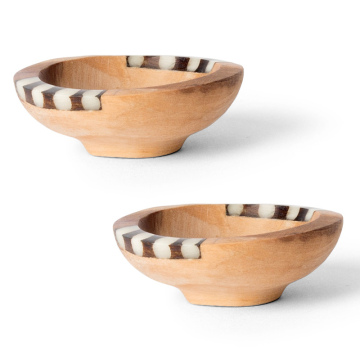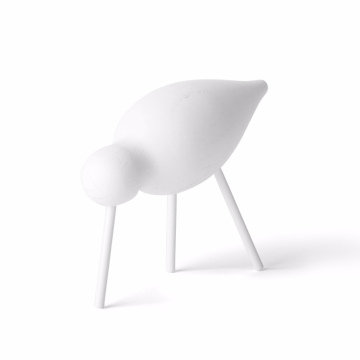From Bowl to Bliss: The Ultimate Donburi Experience
What is Donburi? A Culinary Overview
Donburi, a traditional Japanese dish, is characterized by its simplicity and heartiness, making it a staple in Japanese cuisine. The term "donburi" refers to the bowl itself, which is typically filled with rice and a variety of toppings. This culinary style has its origins dating back to the Edo period (1603-1868), evolving from simple meals served in rice bowls to a diverse array of dishes enjoyed by many. Each regional variation of donburi reflects local ingredients and culinary traditions, resulting in a rich tapestry of flavors across Japan.
There are numerous types of donburi, with some of the most popular being gyudon (beef donburi), katsudon (pork cutlet donburi), and oyakodon (chicken and egg donburi). Gyudon consists of thinly sliced beef simmered with onions in a mildly sweet sauce, served over rice. Katsudon features a breaded and fried pork cutlet topped with a savory egg mixture, and oyakodon combines tender chicken and eggs cooked together in a flavorful broth. Each variation showcases the adaptability of donburi, accommodating the preferences and ingredients available in different Japanese regions.
Common ingredients in donburi dishes include rice, protein sources, seasonal vegetables, and various sauces that infuse incredible depth and flavor. For instance, dashi, a fundamental cooking stock made from kombu (seaweed) and bonito flakes, often serves as a base for many broth-based donburi dishes. Cooking techniques for donburi are straightforward, with a focus on achieving a harmonious balance between flavors and textures.
The accessibility of donburi is one of the reasons it remains a beloved meal option, enjoyed at home, in restaurants, and even at specialty donburi shops throughout Japan. Its versatility and ease of preparation have made it popular beyond Japanese borders, contributing to its growing presence in international culinary scenes.
The Art of Creating the Perfect Donburi
Creating the perfect donburi is an art form that combines careful selection of ingredients, cooking techniques, and presentation. The first step in crafting an ideal donburi lies in choosing the right bowl. The bowl should not only be aesthetically pleasing but also appropriately sized to contain a generous serving of rice and toppings without overcrowding. A well-chosen bowl enhances the visual appeal and sets the stage for a delightful dining experience.
Once the bowl is selected, the next crucial element is the layering technique. The foundation of any donburi is rice, which should be perfectly cooked to achieve the ideal texture—sticky yet distinct grains that hold together without becoming mushy. When layering ingredients in the bowl, start with a generous scoop of rice as the base. It is essential to serve warm rice, as it helps to release steam, which will enhance the flavors of the toppings when they are added. After the rice, thoughtfully place a variety of toppings that include both cooked and fresh ingredients. This not only adds visual appeal but also ensures an exciting range of flavors and textures.
The balance of flavors is paramount in donburi. Foods should not overpower one another; instead, they should harmonize through careful seasoning and cooking. Cooking methods such as simmering and sautéing are often employed to bring out the best in each ingredient. Simmering allows flavors to meld and develop, while sautéing provides a delightful crispiness that can elevate the overall experience. Additionally, ensuring that vegetables retain some crunch is important for texture, creating a delightful contrast between soft rice and hearty toppings. The art of creating a memorable donburi culinary experience lies in the thoughtful combination and preparation of these essential components.
Popular Donburi Variations to Try
Donburi, a quintessential Japanese dish, offers a diverse range of variations that cater to different palates and preferences. Among the most popular types is Gyudon, a comforting beef bowl consisting of tender slices of beef simmered in a flavorful sauce made from soy sauce, mirin, and sugar, served over a bed of warm rice. Often garnished with onions and a raw egg or scallions, Gyudon is not only satisfying but also provides a delightful balance of savory and sweet flavors. This dish pairs well with pickled ginger and a side of miso soup, enhancing the overall dining culinary experience.
Another beloved variation is Katsudon, which features a crispy pork cutlet served atop rice and covered with a savory egg mixture. The preparation involves frying the pork until golden brown and then simmering it with onions and eggs, resulting in a rich, comforting dish. Katsudon is celebrated for its contrasting textures—the crunch of the cutlet and the softness of the cooked eggs—and is often served with a side of shredded cabbage for added freshness. This hearty offering is ideal for a fulfilling meal, especially after a long day.
Ebi Don is a seafood delight, showcasing succulent shrimp placed over a bowl of rice. The shrimp can either be grilled or lightly battered and fried, lending it a delightful umami flavor. Traditionally, Ebi Don is topped with a drizzle of soy sauce and may be accompanied by seasonal vegetables, allowing the natural sweetness of the shrimp to shine through. This variation exemplifies the seasonal versatility of donburi, as other seafood options, such as crab or salmon, can be used to create unique interpretations. Exploring these variations not only highlights the richness of donburi but also emphasizes regional specialties that may be influenced by local ingredients and culinary traditions.
How to Enjoy Donburi: Pairings and Serving Suggestions
Enjoying donburi goes beyond simply savoring the flavors; it encompasses a holistic experience that includes complementary pairings, presentation, and dining rituals. To fully appreciate this exquisite Japanese rice bowl dish, one should consider a variety of side dishes and beverages that accentuate the unique flavors of donburi. Foods such as edamame, pickled vegetables, and miso soup serve as excellent accompaniments, offering a balance of textures and tastes. These options not only enhance the meal but also provide nutritional benefits, creating a well-rounded dining culinary experience.
When it comes to beverages, explore the options of green tea, sake, or even a light beer, each serving to cleanse the palate while accentuating the umami of the donburi. Green tea, in particular, is known for its refreshing qualities and its ability to elevate the flavors of the rice and protein in the donburi. Sake and beer, offering a bit more complexity, can also be delightful choices to accompany various types of donburi, such as gyudon or unadon. Ensuring the right beverage complements the dish is essential in enhancing the overall culinary experience.
Serving techniques play a crucial role in enjoyably savoring donburi as well. A beautiful presentation can significantly enhance one's culinary experience, making the simple act of eating feel more special. Arrange the ingredients artfully, and consider using beautiful bowls that reflect the colors and textures of the dish. Additionally, adopting a ritual of taking a moment to admire the dish before diving in can enhance the appreciation of not just the taste but the artistry involved in creating donburi. By integrating these considerations into your donburi experience, you will transform a simple meal into a memorable culinary delight.





